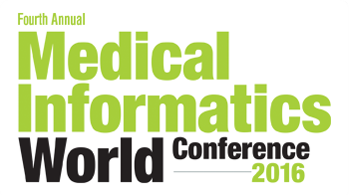HIMSS Future Care Blog
by J. Bryan Bennett
 Healthcare analytics has the potential to help identify potential health risks, promote better health and deliver more accurate diagnosis and treatment plans. There are several challenges that must be overcome before healthcare can deliver on that promise.
Healthcare analytics has the potential to help identify potential health risks, promote better health and deliver more accurate diagnosis and treatment plans. There are several challenges that must be overcome before healthcare can deliver on that promise.
Let’s first agree on the kind of healthcare analytics we are discussing. It’s a broad term and can mean different things to different people. In fact, companies have been performing some kind of healthcare analytics for years, primarily around revenue cycle and claims data. For purposes of this discussion, we are looking at predictive analytics that is the basis for real-time or near real-time decision support. The use of this kind of analytics is still rare among healthcare organizations. In fact, Heather Fraser from IBM’s Institute for Business Value, states that although “two thirds of organizations consider analytics as a high priority and have an analytics strategy or road map in place, only one third are defining analytics based on new ways of using analytics such as predictive and beyond.”
There are 2 levels to healthcare predictive analytics. The first one, or what could be considered the ‘low hanging fruit’, is using risk factors to determine a patient’s propensity for certain health problems. These are the one-to-one or two or three risk factors that may lead to the problem based on lifestyle, ethnicity, family history or health condition. For instance, if a person is a smoker there is strong evidence that they may develop lung cancer or cardiovascular disease. This kind of analysis is fairly easy and can usually be performed in most of the major EHR software solutions.
The second level is much more challenging. This is the kind of analysis that involves hundreds or thousands of patients with similar profiles and health conditions which alerts the provider to the likeliness of a patient developing or having a particular health problem. The challenge here not only comes from incorporating all the other non-identifiable patient data, but also the volume of data that may be required for each patient. Additionally, at this point, no one really knows which data elements would be the most predictive. In other industries, you can start with a FICO score or lifestage or other segmentation and build upon that. In healthcare, we have several factors from demographics to healthcare condition, each with potentially hundreds of variables, which could be predictive. The computing power to manage this will be tremendous.
That leads to another challenge – the data warehouse. Most healthcare organizations are pretty weary from implementing and paying for their EHR solution. As detailed in previous blogs, that’s only the beginning of the technology transformation. The next step is getting the clinical data from the EHR, the claims data, the operations data and ambulatory data into one place where it can be analyzed. To some, this may sound easy, but the volume of structured and unstructured data, regularly extracted and loaded will be a huge burden for many. Dan Burton, CEO or Health Catalyst calls it “a level of data and an order or magnitude that most people can’t comprehend.” Fortunately, his company is helping to make the process a lot easier with their proprietary data loading process. The best part is that they have been able to scale their process to large and small healthcare organizations so that we don’t end up with the system of haves (large groups) and have nots (small groups).
This is not to say that predictive analytics for real-time decision support shouldn’t be pursued. Some companies like the ones I’ve previously mentioned as well as others are making some progress. George Dealy, V.P. from Dimensional Insight states that their customers are already seeing some progress predicting strokes, congestive heart failure and other health problems through their applications.
This is not an overnight transformation; it is something that will take years. Whenever it gets here though, it will be a gamechanger which will help us all live a longer, healthier life.
Source URL: http://www.himssfuturecare.com/blog/predictive-analytics-will-be-game-changer-eventually



